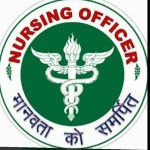What are Pharmacodynamics and Pharmacokinetics
Pharmacodynamics
Pharmacodynamics is the process by which drug influence the physiology of the body cell.
The drugs may act as
Trick---- SDIRA
1. Stimulant
2. Depressive
3. Irritant
4. Replacement
5. Anti infective
1. Stimulant
Some drugs are increase the activity of specialized body cell which are known as stimulant. Some drugs like dopamine in our body acts as like stamina for the activity.
2. Depressive
The drugs act as depressive when they administered in the body of patient. Some drugs like morphine sulphate, heroin, opioids are act as depressive drugs.
3. Irritant
Some drugs are act as irritants to the human body because it produces stimulation action to the central trigger zone of the brain and other body parts. In this the drug act as irritant and their action to the body allergic action, poisonous, toxic effect.
4. Replacement
These drugs are used as a replacement therapy when deficiency occurs in the body. In the diabetes patient the insulin deficiency are found so artificial insulin drugs are replaced to the insulin deficiency.
5. Anti infective
This drugs act as anti infective agent like penicillin, antibiotics, cefotaxime, ofloxacin antibiotic which act as anti infective drugs.
Pharmacokinetics
Pharmacokinetics is the study of drug absorption, drug metabolism and drug secretion. It deals with the drug enter into the body and excrete from the body.
Trick---- ADME
1. Drug Absorption
2. Distribution of the drugs
3. Drug Metabolism
4. Excretion of the drugs
• Kidney
• By the lungs
• By the breast milk
• Through the skin
• Saliva
• Excretion through the bile
1. Drug Absorption
The drugs are administered to through the various routes or site of drug administration and it enters into the bloodstream for thr absorption, metabolism, and excretion.
The process of drug absorption may be simple diffusion technology like urea and alcohol.
The cell membrane is a lipid bilayar so the lipid or fat soluble drugs diffuse quickly than the water soluble drugs. The drugs may be absorbed by the acute transport process by these acute transport process, potassium, sodium, iodine, amino acids, organic acids base, weak electrolytes are absorbed. The glucose are also transported by these process.
2. Distribution of the drugs
When the drugs are absorbed by the body it is distributed to the various body tissue and fluid. The drugs which are easily absorbed by the cell membrane they are widely distributed to the body and those drugs are not easily absorbed by the body they have a limited distribution.
3. Drug Metabolism
The metabolism of drugs are mainly occurs in the liver. In the liver some drug metabolism enzymes are present which are known as hepatic microsomal drug metabolism is kidney, placenta, testes and plasma.
In the childrens the metabolism of the drugs are slow down to the improper development of drug metabolizing enzyme and in woman also have less ability to metabolism of the drugs. The temperature also increase or decrease the ability of drug metabolism.
4. Excretion of the drugs
When the drug is absorbed and distributed to the body tissue after utilization of the drugs they are excreted and excretion of the drugs are decreased their toxic action to the body. This secretion of the drugs excreted by the following routes or areas.
• Kidney
The excretion of drugs are take place in the kidney parts by the tubular secretion, glomerular and tubular infusion all the kidney parts are actively or passively participated in the process of filtration, secretion and excretion. The drugs are excreted in the urine.
• By the lungs
Some volatile drugs like alcohol, general anesthesia paraldehyde groups and some type of inhaler drugs are excreted through the lungs by the respiratory process.
• By the breast milk
After birth of a child a mother absorbed the medicine that are excreted from the breast milk to the child.
• Through the skin
Some type of organic salt arsenic fluid are excreted through the skin by the sweat.
• Saliva
The drugs are excreted through the saliva may impact metabolic taste to the tongue the drugs like iodine metabolic salt are excreted through the saliva. The lead (Pb) is eliminated through the saliva and its deposition produced black lining on the teeth.
• Excretion through the bile
Diphenyl medicine like phenophthaline are excreted through the bile to the small intestine and these drugs are reabsorbed and carried to the liver by these process the duration of drugs is prolonged.



You must be logged in to post a comment.